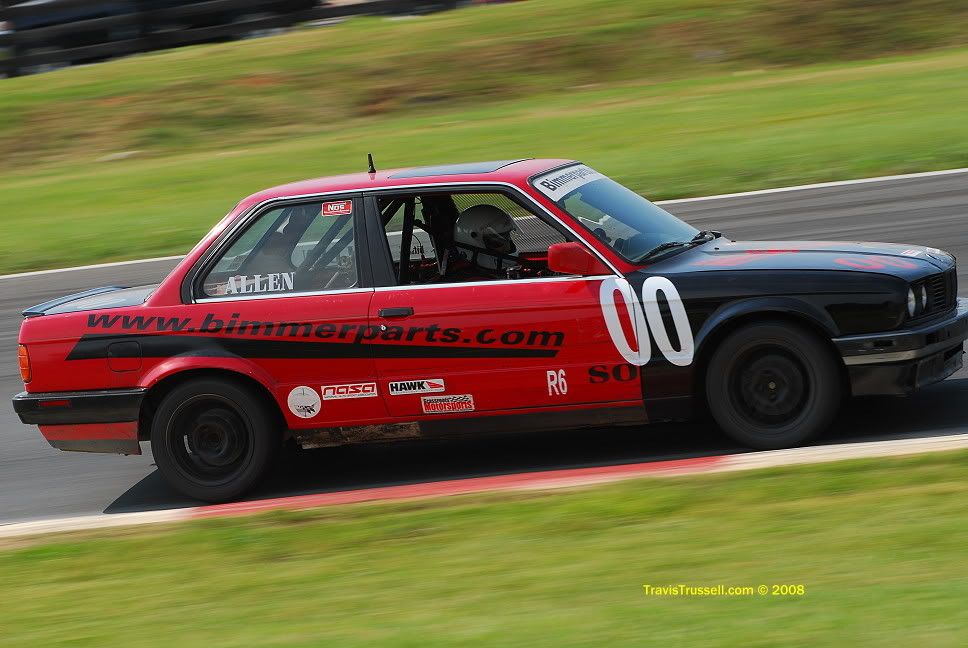All:
An interesting situation occured this past weekend; one that taught me something, and I want to share it with the group so no one is surprised if/when it happens at a future event. And after thinking about it, it does make sense.
One car (the first place finisher) at Summit Point did not have Toyo R888 tires on his car for Saturday’s qualifying and race. To his credit, the driver never tried to hide this from other Spec E30 drivers.
I was not in the Spec E30 paddock area, due to a late arrival Friday night, and discovered the wrong tires on the car on the race grid.
Post race, the second, third, and forth (me) place finishers planned to protest the first place finishing car. Acting as a driver in this situation, I had the protest form in my hand (I told the other guys I would do it) but was told by Jon Lindsey, the visiting NASA National Official (and who had been appointed by the Mid Atlantic Regional Director, to be the acting Race Director), that a protest was not necessary. Jon told us that Tech can spot a rules infraction on a car and can report it to Race Control, who will then disqualify that driver.
In the Mid Atlantic, we have had a few cars, over the history of Spec E30, not make the minimum weight after a race. This being a straight-forward rules infraction, Tech has reported this to Control, and those drivers were disqualified without a formal protest.
While we have never used this procedure for anything other than a post-race weight infraction, it is procedurally correct to use it for obvious infractions like failing to meet the minimum weight, not having the spec tires, etc.
After the Saturday race, I was told, as the Spec E30 Mid Atlantic Regional Director, to accompany the NASA Mid Atlantic Compliance Director to confirm that the first place finishing car had not used the spec tire during the race. Again, the driver did not try to hide this fact, and he was disqualified.
So, while Tech is used in various ways in different regions, this is a legitimate role for Tech and this specific situation was handled correctly.
Also, it was later explained to me that this option is available for several reasons.
- It is quick and easy.
- The result is exactly the same as a formal protest.
- Tech can spot clear and obvious rules infractions.
- Per NASA National, it takes the “heat” off the other drivers. No one has been upset at another driver when he did not prepare his car properly to make minimum weight, and no one should be upset at another driver for not having prepared properly by having the spec tires.
Also, while one driver told me that this kind of rules enforcement will “drive away racers,” we will definitely enforce rules as obvious as this. Plus, technically speaking, the offending driver shouldn’t have been given a qualifying time, according to NASA that day, and he should have started at the back of the pack.
I also want to mention that while a driver or two may feel that rules enforcement is not important, several Spec E30 drivers told me that day that they spent the money and bought the correct tires, and that they were glad to see the spec tire rule enforced, one of our core rules. Plus, as we have seen in other regions this year, other drivers were DQ’d for having improper equipment, specifically core spec parts. And I applaud those regions for their commitment to sticking to the spec philosophy, specifically on core spec parts.
And if enforcing core spec parts is going to drive away racers (I personally think this consistancy will bring more racers), we would rather lose one or two, than to start “letting things slide” to get an additional racer or two.
Plus, NASA offers an option in these situations. If a driver does not have the correct core spec parts, he can always explain this to the NASA officials pre-race, he can race “for fun,” and not get Spec E30 points. We’ve done this in the past and it worked great.
Carter Hunt
Spec E30 National Series Director







